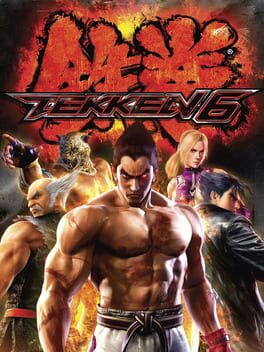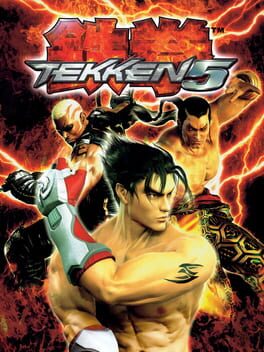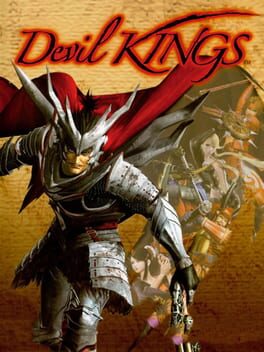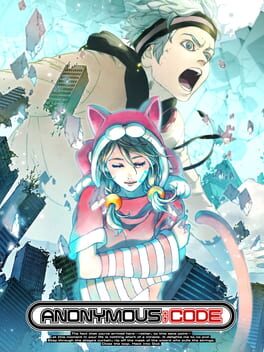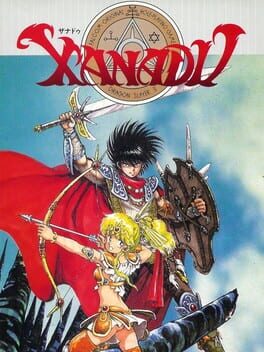DarkEchoes
Bio
Save states and guides are evil. Using real hardware whenever possible.
Save states and guides are evil. Using real hardware whenever possible.
Badges

1 Years of Service
Being part of the Backloggd community for 1 year

N00b
Played 100+ games
116
Total Games Played
004
Played in 2024
184
Games Backloggd
Recently Played See More
Recently Reviewed See More
The first half was amazing, but the rest of the game really went downhill for me.
After 7 years in development and several rewrites, it feels like Shikura Chiyomaru gave up trying to find a use for his original ideas and went with whatever version they had at the time. An interview with him in Famitsu from July 7, 2020, suggests that to be the case. When jokingly asked if the game is ready to release, Shikura Chiyomaru states, "We were busy until the last second, but I think it should be fine. However, I would not say that the game is finished. Instead, we decided to stop here."
The opening chapters kick off confidently, filled to the brim with content. There are comic-style animated scenes, manga-like expositions, tons of CGs, scooter segments and more. The story itself keeps up a good pace, moving from one 'incident' to the next. However, the whole game comes to a halt around Chapter 8 and never truly picks up again. You could argue this is a deliberate narrative choice, but I feel there are so many other things that could have worked better. The storytelling also resorts to conventional text+sprites with rare CGs and animated scenes. The Save-Load gimmick, which was interesting for the first few hours of the gameplay, gets beaten to death. The only impressive moment comes towards the end, when the player is tasked to solve a puzzle. However, forcing the player to use a gimmick that was entirely optional up to that point in the story in order to reach the true ending is a bad design choice with no other way to put it. The second half drags on for too long, but paradoxically, when the credits roll, it feels like you missed half of the game—or better yet—there is a second half somewhere waiting to be found. It is a shame that this is the product we have got. In the same interview, Shikura Chiyomaru notes how they tried to make the game "easy to understand"—especially in relation to in-game terminology—and I am curious if this decision influenced the production of the second half in some way.
Anonymous;Code went through a number of rewrites, and I wonder what other iterations looked like. One can hope there is a world line where Shikura Chiyomaru decided to push through and finish the game. But alas, it seems out of reach.
----------------------------------------
Here is the aforementioned interview:
https://www.famitsu.com/news/202207/07267624.html
After 7 years in development and several rewrites, it feels like Shikura Chiyomaru gave up trying to find a use for his original ideas and went with whatever version they had at the time. An interview with him in Famitsu from July 7, 2020, suggests that to be the case. When jokingly asked if the game is ready to release, Shikura Chiyomaru states, "We were busy until the last second, but I think it should be fine. However, I would not say that the game is finished. Instead, we decided to stop here."
The opening chapters kick off confidently, filled to the brim with content. There are comic-style animated scenes, manga-like expositions, tons of CGs, scooter segments and more. The story itself keeps up a good pace, moving from one 'incident' to the next. However, the whole game comes to a halt around Chapter 8 and never truly picks up again. You could argue this is a deliberate narrative choice, but I feel there are so many other things that could have worked better. The storytelling also resorts to conventional text+sprites with rare CGs and animated scenes. The Save-Load gimmick, which was interesting for the first few hours of the gameplay, gets beaten to death. The only impressive moment comes towards the end, when the player is tasked to solve a puzzle. However, forcing the player to use a gimmick that was entirely optional up to that point in the story in order to reach the true ending is a bad design choice with no other way to put it. The second half drags on for too long, but paradoxically, when the credits roll, it feels like you missed half of the game—or better yet—there is a second half somewhere waiting to be found. It is a shame that this is the product we have got. In the same interview, Shikura Chiyomaru notes how they tried to make the game "easy to understand"—especially in relation to in-game terminology—and I am curious if this decision influenced the production of the second half in some way.
Anonymous;Code went through a number of rewrites, and I wonder what other iterations looked like. One can hope there is a world line where Shikura Chiyomaru decided to push through and finish the game. But alas, it seems out of reach.
----------------------------------------
Here is the aforementioned interview:
https://www.famitsu.com/news/202207/07267624.html
More than an action game, Xanadu is a management game.
Manage your money, manage your items, manage your key stock, manage your karma, manage your level, manage what type of attack you use, manage what items you collect, manage what monsters you kill. Oh, and don't forget map knowledge.
Playing Xanadu blind is brutal and even the official Japanese guide that comes with the game does not explain a number of critical game mechanics and what a number of essential items do. It's your old "figure out for yourself" formula but because the whole "management" game is so tight, you will be resetting the progress quite frequently on your first playthroughs, often times starting a new save. It is a very frustrating experience at first but as you learn each element of the "management" game, it becomes easier to play. However, the gratification is short-lived. Even with maps turning into an absolute mess to navigate in the later half and dungeons increasing in complexity, Xanadu simply starts to feel tedious. There are still a few puzzle pieces left, like finding the best gear and locating the last boss, but the grind and back-tracking you have to do at the final stretch is simply not fun.
I skipped all games that released in-between Dragon Slayer and Xanadu, so I am not sure what kind evolution Falcom games were going through at that time but taking just these two titles, you can clearly see Falcom trying new things and experimenting with different game mechanics. Later they probably realized it is the "action" part of their games (namely, the bump system) that brings most fun and satisfaction and gave it a try with Ys. Conforming to modern gaming standards and trends is something even Falcom cannot resist but I wonder what game mechanic subsequent entries in the Dragon Slayer series decided to prioritize and what a modern Xanadu game would look like.
----------------------------------------
Games played prior: Dragon Slayer (PC88), modern versions of all numbered Ys games, except Ys IX and Ys X, all Kiseki games except Kuro 1/2.
Manage your money, manage your items, manage your key stock, manage your karma, manage your level, manage what type of attack you use, manage what items you collect, manage what monsters you kill. Oh, and don't forget map knowledge.
Playing Xanadu blind is brutal and even the official Japanese guide that comes with the game does not explain a number of critical game mechanics and what a number of essential items do. It's your old "figure out for yourself" formula but because the whole "management" game is so tight, you will be resetting the progress quite frequently on your first playthroughs, often times starting a new save. It is a very frustrating experience at first but as you learn each element of the "management" game, it becomes easier to play. However, the gratification is short-lived. Even with maps turning into an absolute mess to navigate in the later half and dungeons increasing in complexity, Xanadu simply starts to feel tedious. There are still a few puzzle pieces left, like finding the best gear and locating the last boss, but the grind and back-tracking you have to do at the final stretch is simply not fun.
I skipped all games that released in-between Dragon Slayer and Xanadu, so I am not sure what kind evolution Falcom games were going through at that time but taking just these two titles, you can clearly see Falcom trying new things and experimenting with different game mechanics. Later they probably realized it is the "action" part of their games (namely, the bump system) that brings most fun and satisfaction and gave it a try with Ys. Conforming to modern gaming standards and trends is something even Falcom cannot resist but I wonder what game mechanic subsequent entries in the Dragon Slayer series decided to prioritize and what a modern Xanadu game would look like.
----------------------------------------
Games played prior: Dragon Slayer (PC88), modern versions of all numbered Ys games, except Ys IX and Ys X, all Kiseki games except Kuro 1/2.

